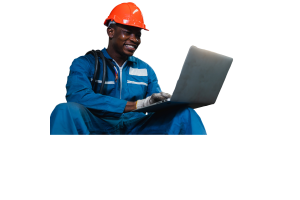SV Profiling: How Little Can You Get Away With?
By: Chris Malzone, VP of Sales & Marketing & Jehan Zouak, Marketing Manager - AML Oceanographic
Improper measurement of oceanographic structures have been shown to lead to enormous errors, but the question still remains: How “little” sampling can I get away with?
In the first two blogs of this three-part series we began laying out the groundwork for “how often” you should take a Sound Velocity Profile. We first explained what exactly is sound velocity, which oceanographic parameters impact its value, and what errors in measurements of each (eg Conductivity, Temperate, Pressure) will do to your multibeam data. We then laid out the oceanographic and regional factors that can lead to challenging conditions. Such conditions can be geographic in nature (proximity to freshwater & saltwater mixing) or purely physical in nature (ie. KH Waves, internal waves). Improper measurement of such oceanographic structures have been shown to lead to enormous errors, but the question still remains: How “little” sampling can I get away with?
Have you ever flipped that question around and asked, “What happens to my survey data if I don’t sample enough?” Or, “Is there a point of diminishing returns on collecting more sound velocity data?”
Thankfully the work of some REALLY smart people, John Hughes Clarke and Semme Djikstra, help us get a good handle on this.
WHY DO SURVEYORS WANT TO KNOW HOW LITTLE SAMPLING THEY CAN GET AWAY WITH?
Why do surveyors want to know how little sampling they can get away with? “Time is money” is a phrase that rings particularly true in the survey industry, making it a cold, hard fact that stopping to do a sound velocity cast is money lost. AML has provided a tool for you to quantify that cost in our MVP calculator.
Integration of near-continuous sound speed profile information - Canadian Hydrographic Conference 2000
The approach that John Hughes Clarke took during the data analysis was as ingenious as it is simplistic. Rather than taking fewer profiles, he simply downsampled the profiles to illustrate how “little” he could get away with in terms of the impact that SV data density has on multibeam data quality.

Moving from top to bottom on the set of plots above, we first see all the SV data from every profile ranging from 1515 m/s in pink to 1480 m/s in blue. We can see areas with strong stratification or layering, clear evidence of tidal mixing, and entry of cold water at depth near the end of the survey. Below that plot, the data is downsampled by reducing the number of profiles from 2.3 minute intervals to 17, 34, 70, and finally 140 minute intervals, respectively. It’s worth noting that an interval between profiles of 2 hours and 20 minutes is by no means extreme, and for many organisations may be considered too frequent! Regardless, it is evident that the 140 minute data is not representative of the regional oceanography.
Following the downsampling, the data was interpolated between SV profiles by merging the data between two profiles, with a bias depending on which profile is geographically closest at any particular point.

Interpolation is only useful and productive if the SV frequency is greater than the rate of change in oceanographic conditions.

The sound velocity data for the interpolated and real-time were separately applied to multibeam data for all time intervals. Differences grids were created looking between the 2.5 minute data versus the 17.5 min and the 2.5 min versus the 140 minute data. The root-mean square (RMS) errors were then calculated from which errors exceeding 5% were observed. These errors were greater during times when the sound velocity structure was complex.
From this study it was then concluded that under typical survey conditions:
- There is no indication as to how complex the oceanography may be.
- Attempts to improve results using interpolation are only useful if the sampling period is shorter than the time or distance scale of which the oceanography changes.
What's changed since 1999?
About 20 years later, AML was provided another data set and analysis from Semme Djikstra, Research Scientist at UNH, to revisit this methodology but in a slightly different location – roughly 90 km inland from Georges Bank in the Gulf of Maine in significantly shallower water, roughly 15 meters. As before, the area is known for a strong thermocline during the summer months which results in an internal wave that propagates slowly over Georges Bank onto the continental shelf. The demarcation between two water masses ebbs and flows over tens of kilometers leading to a complex sound velocity structure. As before, the survey utilized an MVP to operate in continuous mode with profiles taken every 2.3 minutes over a 45 km transect.

Learn how MVP can make a difference for you.
AML’s Moving Vessel Profiler is proven to remove both the technical and financial unpredictability associated with survey operations. With over 130 systems sold, MVP is the market leader in underway profiling systems, and is backed by 20 years of experience and thousands of successful surveys.















